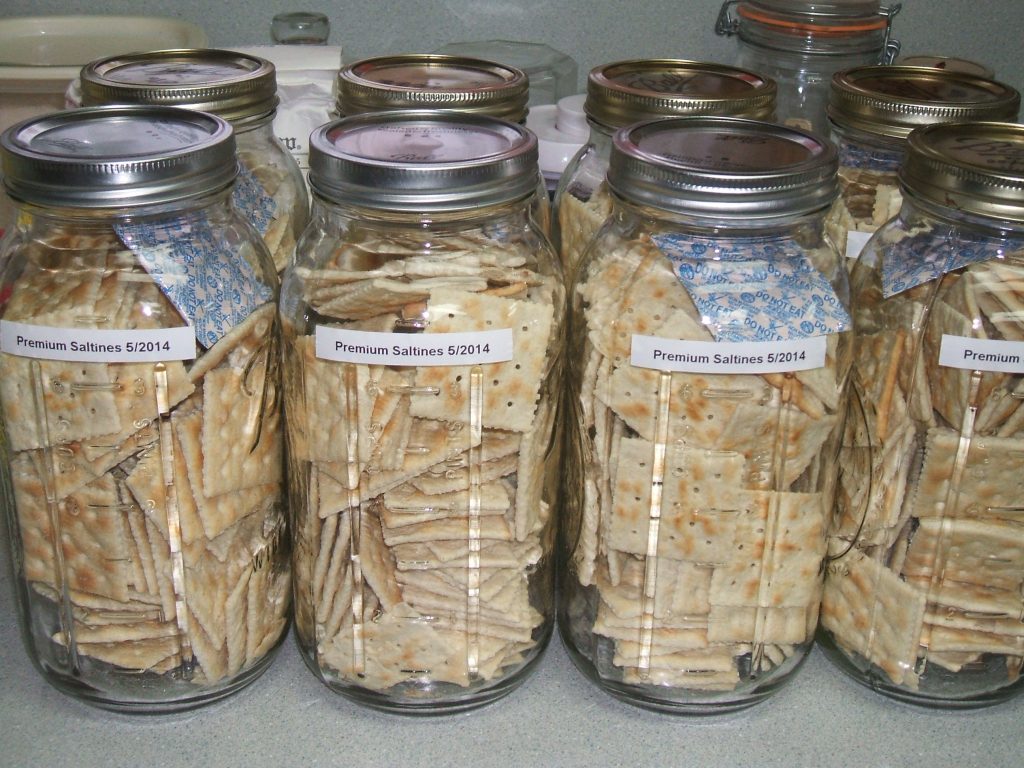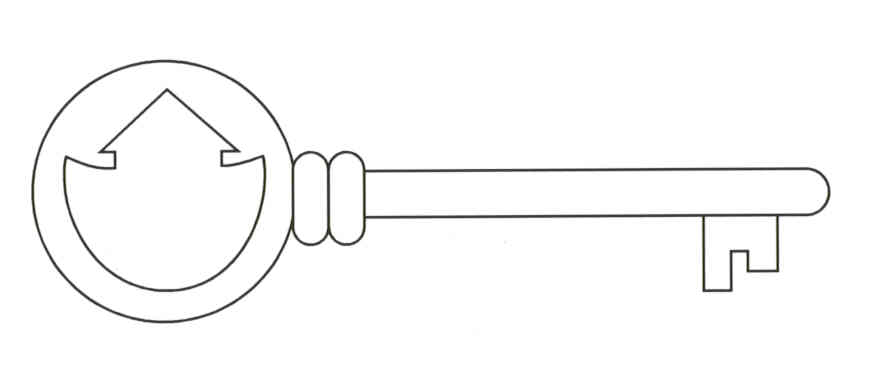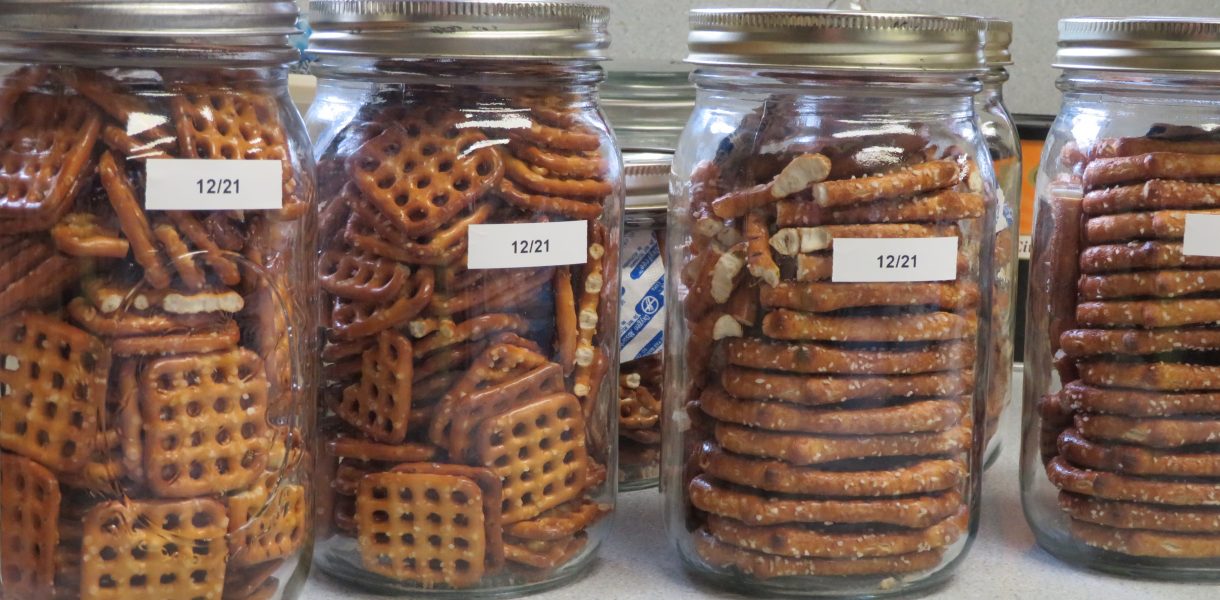Food that is dry (10% moisture or less) and low fat can be dry packed in glass canning jars using oxygen absorbers. Use 300cc oxygen absorbers in quart or half-gallon jars, 100cc absorbers in quart or pint jars, and 50cc absorbers in pint jars.
INSTRUCTIONS:
- Check canning jars for a smooth jar rim. Do not use jars with nicks or cracks in the rim.
- Wash jars and thoroughly dry before using.
- Warm canning jar lids in water to soften the sealing compound.
- Fill jars with food leaving 1/2 to 1/4-inch headspace. A canning funnel helps.
- Remove oxygen absorbers from their container – one for each jar – and reseal the container.
- Put one oxygen absorber in each jar of food, poking it down into the food or along the side of the jar.
- Wipe the jar rim with a clean, dry cloth or paper towel to make sure no food or food dust is on the rim.
- One at a time, remove a jar lid from the hot water and dry thoroughly. Place on a jar and screw down tightly with a canning jar ring.
- When the lid sucks in and “pings” or “clicks,” the jar is sealed. This could take a few minutes or hours depending on the density of the food and how full the jar is.
- Label and date jars.
- Store in a relatively cool, dark place.
Do not use glass mayonnaise jars. The rim is not the same width as a canning jar and the seal will eventually break.
Lids may be reused for dry-pack canning if the lid is not bent and the sealing compound is still intact. However, do not reuse more than once or twice for best results.
Do not dry pack home dried food unless it is crisp dry and snaps when bent. Moisture and lack of oxygen can provide growth opportunities for botulism producing bacteria.
Foods that can be dry packed in canning jars include white rice, wheat, popcorn and other whole grains, oatmeal, dry beans, powdered milk, white flour, pasta without egg, freeze dried foods, dehydrated foods that are crisp enough to snap, TVP, cheese powder, gelatin, low fat ready-to-eat cereals, and low fat or fat free pretzels. Sugar may be stored in jars, but oxygen absorbers are not necessary.
Some foods may keep longer when dry packed but will probably not have the shelf life of unprocessed, low moisture, low fat foods. These include cornmeal, nuts, and seeds. These foods should be used regularly to avoid rancidity.
Oxygen absorbers are more effective in removing oxygen than vacuum sealers.


